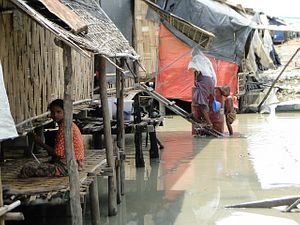In Rakhine state in northern Myanmar, at least 800,000 people are without any nationality. In the Dominican Republic, tens of thousands of Dominicans of Haitian descent lost their nationality as a consequence of a 2013 constitutional court decision. Globally, at least 10 million people are estimated by the UN High Commissioner for Refugees (UNHCR) to be stateless with other significant stateless populations found in countries as diverse as Thailand, Côte d’Ivoire, Iraq, Syria and Latvia. The story of the stateless, their desperate efforts to be recognized and to belong, has largely been hidden. Pushed to the margins of society, denied basic rights and opportunities and desperately vulnerable to exploitation, they exist as “legal ghosts.”
Yet the stateless are not invisible in international law. Sixty years ago the international community adopted the 1954 Convention on the Status of Stateless Persons, recognizing the plight of those left without nationality in the postwar world. Several years later, the 1961 Convention on Reduction of statelessness was adopted, introducing safeguards against statelessness. Subsequently, though, these treaties and the issue of statelessness generally were consigned to obscurity. However, nationality issues triggered by the dissolution of the Soviet Union, Czechoslovakia and Yugoslavia in the 1990s led to a renewed focus on statelessness, including on the part of UNHCR, the UN agency with a mandate for stateless persons. Last week, the UN High Commissioner for Refugees launched a campaign for statelessness to be eradicated within the next decade.
So who are the stateless? While some are migrants or refugees, the vast majority suffer an internal exile, unacknowledged in the only country they have ever known. Some are born stateless, others fall into this predicament later in life. The causes are multiple, including unintentional consequences of conflicts between nationality laws, notably when a country breaks up. But statelessness is often the result of deliberate discrimination against a particular community, reflected in nationality laws and practices. Gender discrimination in nationality laws is another significant cause – 27 states still do not allow women to pass on their nationality to their children.
International law provides a framework for action in respect of the stateless. The 1954 Convention establishes minimum guarantees in areas such as education, health care, employment and identity as well as travel documents. While it does not oblige states to provide nationality for stateless persons in its territory, it asks them to facilitate naturalization. As for the 1961 Convention, this sets out important safeguards that can be incorporated into nationality laws to prevent statelessness, for example in relation to acquisition of a nationality at birth or loss of nationality on marriage or as a result of prolonged residence abroad. Low levels of ratification of the UN statelessness conventions raise questions about their impact and continued relevance. However, in recent years concerted advocacy by UNHCR and civil society has led to a marked increase in the number of states willing to become parties to these treaties.
International human rights law plays a significant and complementary role. Its guarantees apply to all persons, with very few provisions restricted to nationals alone. Key human rights standards include the obligation to ensure birth registration, the prohibition on arbitrary deprivation of nationality, guarantees of equal treatment for women in relation to nationality laws and protection against arbitrary detention. In regions where ratification of the UN statelessness conventions is poor, standards in human rights treaties (which enjoy higher levels of participation) take on particular significance.
Better understanding of the international legal framework is critical. In the past few years UNHCR has issued a number of guidelines on various aspects of this framework, some of which are now published as a Handbook on Protection of Stateless Persons. Alongside this, the promotion of best practice is a pragmatic means of encouraging state action. Key areas include improved birth registration, reform of nationality laws, statelessness determination procedures and, for those who are stateless in their country of birth, simple mechanisms to facilitate conferral of nationality.
Much still needs to be done to embed the issue of statelessness in the human rights and humanitarian worlds. However, for UNHCR to meet the challenge it has set both itself and the international community, statelessness needs to be mainstreamed into sectors such as development and conflict prevention. Aside from the human rights implications, statelessness impacts on social cohesion, political stability, and economic development. In extreme cases it may contribute to conflict and refugee movements. The benefits of resolving stateless situations reach far beyond the individuals concerned.
Ruma Mandal is Senior Research Fellow, International Law, at Chatham House. Read her recent briefing paper on statelessness.

































